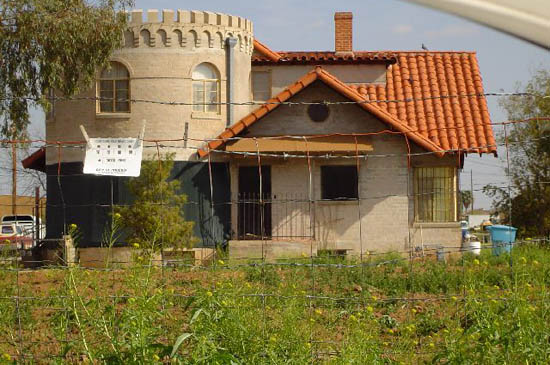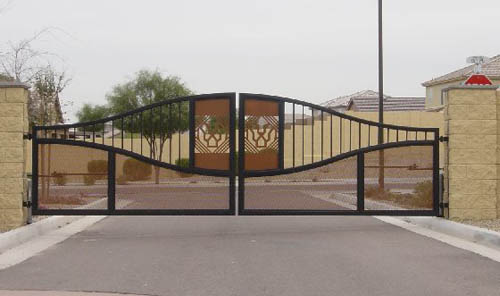|
|
|
Apartheid?
I
drive, walk, even just look around South Phoenix and am repeatedly
struck by the clash I see. There is an amount of diversity that is
historically inherent in this community, from the Asian wig shops to
the Mexican markets and on to the neighbourhoods populated with
people of all colours and creeds. But there is an interesting thing
about one particular group in this diversified place. The group I
speak of is newest to the area, and they are the middle class. They
are moving into new developments that are behind walls and gates
instead of just constructing and living among everyone else. It
seems that as you look around at some of the older, poorer places,
you can find bars on windows and chain link fences around property,
and you might think “Well, what’s new?” Nothing is new except the
frequency and volume, and that is a problem. People were
barricading themselves into their homes before the arrival of the
swarms of middle class. There were those who had a little, and were
surrounded by those who didn’t have a lot. Now whole communities of
“Haves” are being build and occupied, and trying to protect
themselves from the “Have Nots”. The effect is that what used to
look like a diverse, colourful and unified area is starting to look
(from the outside) like it is composed of pockets of culturally
colourful neighbourhood with pockets of sealed off, sterile
fortifications in it.
The colourful
look of South Phoenix is breaking up. The area is losing its
flavour in favour of a broken up land of segregation. See? I said
it. The word that Massey and Denton say in “American Apartheid:
Segregation and the Making of the Underclass”, has “…disappeared
from the American vocabulary.” Segregation may have a new form in
the walled community, but it’s still the same old problem. This is
not to say that I totally agree with Massey and Denton. I would not
call it “American Apartheid” as that to me conjures up images of a
strictly Black/White issue that would involve the regression of
American civil rights practices to 1950’s standards towards African
Americans and would require the addition of razor-wire topped chain
link fences over block walls around the yards and property of the
White population, but I think that image is a bit more extreme than
what we are currently seeing. Today’s problem with segregation is
far more about class distinction, and less about colour. So, indeed
I think Massey and Denton may be throwing “hot” words around for
attention. The HOA’s that rule the walled communities can underhandedly control who doesn’t get to come inside. And regardless of the power of the HOA, the wall itself sends a clear message, which is that no one under a certain income level is welcome inside. A clear picture of this is painted in geographer Andrew Kirby’s “Spaces of Hate: Geographies of Discrimination and Intolerance in the U.S.A.” Kirby explores the HOA and its influence and potential and finds these pervasive forms of private governce to be latent pits of danger to personal rights. The kinds of segregation methods and controls over the rights of the individuals used by HOA’s are setting up communities to feel as though they are at risk from the outside. This can lead to feelings of vulnerability and the need for actual defence from outsiders. As Kirby states “These are significant tropes, for it will be remembered that these are exactly the kinds of logic that have always been introduced to justify attacks on minorities,” (p.222). Is South Phoenix becoming a possible flashpoint for these problems, as classes begin to compete for the area? We’ll see first hand over the next few decades, maybe much sooner.
|
|
| Back to South Phoenix 2005 | |


